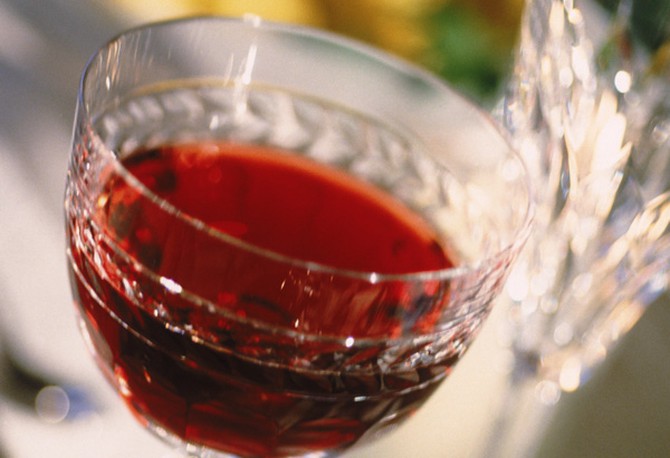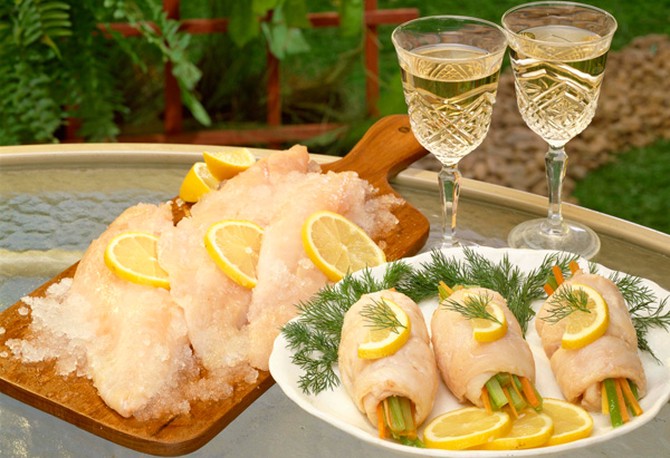6 Wine Pairing Tips
Wondering what wine goes best with what dish? Let an expert guide you through the perfect pairings.
By Jill Silverman Hough

Photo: John Foxx/Thinkstock
1. Sweet Foods with Sweet Wines
Pair sweet foods with sweet wines. For example, chocolate and Port. If you pair a sweet food with an unsweet, or dry, wine, it can make the wine taste sour or, in a red wine, it can accentuate those bitter, dry-mouth tannins. Even a dish that's just a little bit sweet, like honey-glazed ham or chicken with mango salsa, can have enough sweetness to make a dry wine taste less than ideal. So while sweet dishes need sweet wines, slightly sweet dishes often need slightly sweet, or off-dry, wines.

Photo: Jupiterimages/Thinkstock
2. Acidic Foods with Acidic Wines
Pair acidic foods with acidic wines. For example, salad with a vinaigrette dressing and Sauvignon Blanc. If you pair a not-very-acidic food with an acidic wine, it can make the wine taste more acidic and sometimes downright sour.
Get a recipe for acidic Heirloom Tomato, Mozzarella and Basil Salad.
Get a recipe for acidic Heirloom Tomato, Mozzarella and Basil Salad.

Photo: Jupiterimages/Thinkstock
3. Rich Foods with Rich Wines
Pair rich/meaty/heavy, acidic or slightly bitter foods with tannic wines (wines that give you that bitter, dry-mouth feeling you often get from a red wine). Adding salt will also help balance tannins. For example, charbroiled steak with mustard sauce and Cabernet Sauvignon. If you choose a food that fails to somehow account for the tannins in a wine, it can make the wine taste even more tannic, and sometimes unpalatably bitter.
It may seem strange to recommend adding bitterness to food, because we usually associate bitterness with unpleasantness. But there are many foods that have some bitterness, and that bitterness is enjoyable—a little charring on a grilled steak or a roasted red pepper, for example.
Get a recipe for rich Sharp Cheddar and Bresaola Melt.
It may seem strange to recommend adding bitterness to food, because we usually associate bitterness with unpleasantness. But there are many foods that have some bitterness, and that bitterness is enjoyable—a little charring on a grilled steak or a roasted red pepper, for example.
Get a recipe for rich Sharp Cheddar and Bresaola Melt.

Photo: Stockbyte/Thinkstock
4. Light Foods with Light Wines
Pair light foods with light wines and heavy foods with heavy wines. For example, tomato salad and Pinot Grigio, or Brie baked in puff pastry and Chardonnay. If you pair a light food with a heavy wine, or vice versa, things won't necessarily taste bad, they'll just seem out of balance. The heavier or richer component of the pairing will overwhelm the lighter one and sort of wash your experience of it away.
This tip is where you get the classic idea that white wine goes with fish and red wine goes with meat. And while that's a good rule of thumb, it's not always true. Salmon, for example, can pair beautifully with Pinot Noir because salmon is heavy for a fish and Pinot Noir is light for a red wine.
Get a recipe for light Bacon-Wrapped Halibut Bites.
This tip is where you get the classic idea that white wine goes with fish and red wine goes with meat. And while that's a good rule of thumb, it's not always true. Salmon, for example, can pair beautifully with Pinot Noir because salmon is heavy for a fish and Pinot Noir is light for a red wine.
Get a recipe for light Bacon-Wrapped Halibut Bites.

Photo: Stockbyte/Thinkstock
5. Intense Foods with Intense Wines
Pair intense foods with intense wines. For example, peppercorn steak and Syrah. As with the preceding tip, this helps prevent one component from overwhelming the other.

Photo: Jupiterimages/Thinkstock
6. Identify Most Expressive Components
When considering a dish, consider its most expressive components. For example, fillet of sole with cream sauce and Chardonnay. In other words, when deciding if your dish is sweet, acidic, rich/meaty/ heavy, bitter, light, intensely flavored or some combination, don't look to its main ingredient. Consider the dish as a whole, identify the dominant flavors and textures, and then let those elements inform your wine choice.
In this example, the light fish might suggest a light wine. But the most expressive, or dominant, component of the dish isn't the fish—it's the cream sauce. And since that's rich, according to General Pairing Tip 4, the dish would be best with a rich wine, like Chardonnay.
In this example, the light fish might suggest a light wine. But the most expressive, or dominant, component of the dish isn't the fish—it's the cream sauce. And since that's rich, according to General Pairing Tip 4, the dish would be best with a rich wine, like Chardonnay.
Published 05/27/2010

